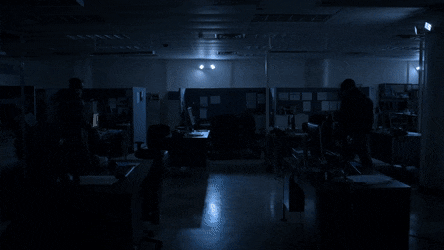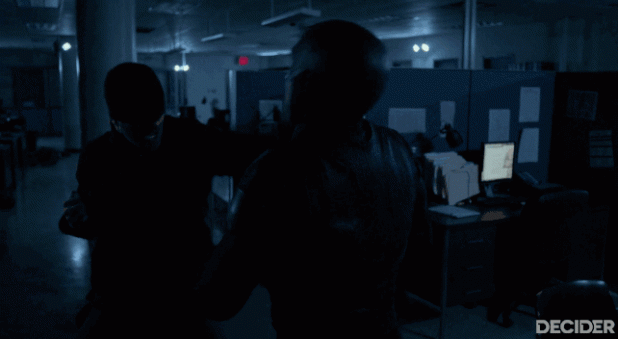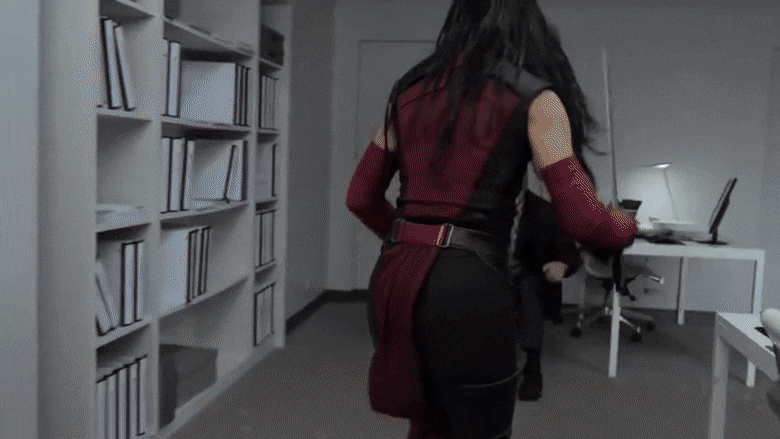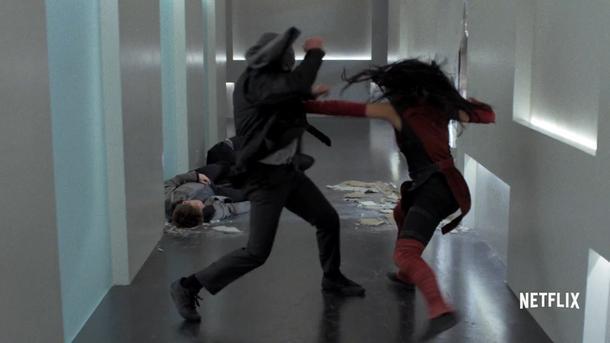Five years ago, Daredevil was repackaged, retooled, and reintroduced to popular culture in the live-action medium when Marvel Television decided to use the character in its first foray into the streaming space, via its partnership with Netflix. Unlike the previous incarnation released in cinemas in 2003, this version of Daredevil not only resonated with fans, but was critically acclaimed and financially successful. Most importantly, it (much like Arrow did for CW) spawned a shared universe for the smaller screen, one where a number of well-known (and not so well-known) characters were successfully adapted for the masses.
For three seasons, Marvel and Netflix told the story of Matthew Murdock, as he battled crime in the courtrooms as well as the rooftops, back alleys, and docks of the city. He faced crooked businessmen, gun runners, drug dealers, assassins, enforcers, ninjas, antiheroes, and corrupt law enforcement, using his wits, grit, mental toughness, and fighting skills, and he battled them successfully on all fronts. Murdock wasn’t a billionaire tech genius, a master spy trained by the government, or a kung fu master; he was a blind kid, the son of a boxer who learned about the harsh realities of life early, and burdened himself with the responsibility of doing what it took to battle those who would wrong others, working inside and outside of the law. No natural genius, no powers, no serum, no government programming — he did all this armed with his will and his skill.
In honor of this series, the impact it had on pop culture, and the ripples it created through the various other live-action shows it spawned, I am doing a breakdown of the fighting style, technique, strategies, and habits of Marvel’s own educated brawler, Matthew Murdock, AKA Daredevil.
Aggressive Counter-Punching 101
Unlike fellow boxing aficionado Steve Rogers, Matt Murdock’s style is based on fighting off the front foot, i.e. pressuring his opponent (or in layman’s terms getting in his face). He likes to initiate exchanges from this forward pressure, unlike Rogers, who often lets an opponent come to him or gets on the back foot and draws him in.This is highlighted in his first engagement with Benjamin Poindexter AKA Bullseye, from Season 3.
1) The first thing Murdock does is throw an object at Poindexter. The goal isn’t to hit him with it, however; in true boxing fashion, the goal is to create a safe passage into boxing range by drawing out a response from Poindexter, which came in the form of a spinning back fist.
2) Murdock parries to the inside, taking that hand away as a defensive or offensive tool, then comes over the top with a hard one-two.
3) When Murdock brings his hands back to his low guard, Poindexter traps his right hand (the power hand), then attempts to get a wrist lock counter (much like Steve Rogers did to Bucky Barnes in Captain America: the Winter Soldier). Murdock, however, comes over the top with an elbow strike to break the hold and reestablish his forward pressure.
4) Poindexter punishes Murdock’s overpursuit with a stiff (and staff enhanced) body shot which pushes Murdock back a half step. Instead of backing off to set a trap in order to punish Poindexter’s aggression, Murdock cuts it off by getting right back in his space but stepping around him; this forces Poindexter to reset, allowing Murdock to block the right hand. He then slips the left straight that follows it before forcefully parrying another right hand.
5) Poindexter, sensing that Murdock has overcommitted to the parry, but realizing his feet aren’t in position to fire or land a left without being punished severely for it, instead opts for a backfist, which Murdock blocks by sliding his guard up on his right side, as he simultaneously counters with a short left to the body.
6) The left hand disrupts Poindexter’s rhythm, and drops his guard, opening him up for the right hook over the top. Again Poindexter tries to land the right hook, but Murdock has it sniffed out, blocking it and creating an opening in Poindexter’s guard, which is punished with a short left hook.
7) Again Poindexter fires back with the hook/straight combo he used earlier in the exchange, but Murdock steps back from the hook, parries the straight right, and comes over the top with a HARD right that sends Poindexter staggering back.
8) Murdock, having fallen off balance a bit after getting his feet out of position in that last exchange, resets into the old school low guard boxing stance, and slowly begins creeping into boxing range, pressuring Poindexter into rushing back in instead of sitting back and letting Murdock take his space away.
The key to this entire exchange is that Murdock continually presses and stays in front of Poindexter, forcing him to engage in exchanges he doesn’t want to be in and is ill-equipped to succeed in. By coming forward, Murdock is creating openings, getting Poindexter to show his hand in a fashion similar to what Floyd Mayweather did to Conor McGregor in their fight — punishing him, extending exchanges, and making him fight instead of looking for ways to reestablish the space and range needed to be effective — and Murdock achieves similar results.
Changing Levels
When initiating exchanges, a fighter risks a) being countered by an opponent or b) being inefficient, as that opponent can see the fighter coming and prepare a defense or guard. To offset that, Murdock attacks multiple targets, on multiple levels.This forces the opponent into defense constantly, adjusting and readjusting due to the fact that Murdock is attacking high and low, which helps him create openings in his opponent’s defense and exploit those openings. The subtle shifts in levels as he attacks also hinder the opponent’s offense, because if the attacks are coming from different levels, that requires the counters to come at different levels. If the wrong level is picked at the wrong moment, the opponent will be punished. This confrontation with Elektra Natchios from The Defenders illustrates the point.
1) Murdock presses, which draws out Elektra, who responds by over pursuing, attacking with a slashing sword strike. Matt slips to the left, using an aggressive parry to get her off-balance and create an opening.
2) Being unbalanced so forcefully walks Elektra right into a short right cross, one that stuns her slightly. Murdock angles off slightly and punishes her with a right hook to the body, then comes back over the top with a short left hook. This loads up his hips so that he can fire off that right hand to the body, which is the shot he really wanted.
3) Elektra, though at this point enhanced in both power, athleticism, durability, and recuperative ability, is still feeling the effects of facing a larger, heavier opponent who has committed to touching her to the body, which is both more exhausting and painful. This forces Elektra to lash out again, forcing Murdock back, and creating space where her weapons, fighting style, and physical gifts are once again an asset.
Murdock, facing an opponent who was his physical superior, had to attack on multiple levels, primarily to keep her off balance and force her to fight at a range and pace she wasn’t comfortable fighting at, but also forcing her to stay on the defensive, which is a death sentence in combat, as it allows her opponent to outwork her in the short term and break her down in the long term.
In Part 2, I explore the qualities that make Matt Murdock the “educated brawler” of the Marvel Cinematic Universe, and the toughness and grit he brings to offensive and defensive exchanges.








